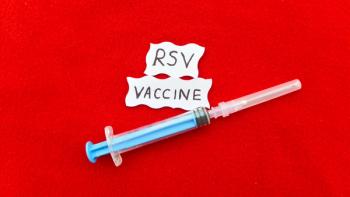
ACS Cancer Mortality Reduction Goal Falls Short
The United States reduced cancer mortality by 26% overall, falling short of the 50% reduction goal set by the American Cancer Society.
A recent report finds that there was substantial progress in certain areas of the goal set by the American Cancer Society (ACS) to reduce cancer deaths 50% by 2015. The report also finds areas where progress was not substantial.
According to the study published in CA: A Cancer Journal for Clinicians, in 1996 the ACS challenged the United States to reduce the mortality rate by 50% by 2015 in order to reduce what seemed to be peak cancer mortality in 1990.
The most significant improvements were seen in prevention, early detection, and treatment tools available for lung, colon, breast, and prostate cancers.
Compared with 1990, the overall mortality rate was 32% lower among men and 22% lower among women in 2015.
"That the ACS challenge goal to reduce US cancer mortality by 50% over the 25-year period from 1990 to 2015 was only one-half achieved should be seen as a glass half full. This progress should eliminate any historical remnants of cancer fatalism, and it should now stimulate our national imagination about what might be possible to achieve into the future,” the authors wrote.
For men specifically, mortality rates decreased for lung cancer by 45%, colorectal cancer by 47%, and prostate cancer by 53%.
For women specifically, mortality rates decreased for lung cancer by 8%, colorectal cancer by 44%, and breast cancer by 38%.
Researchers discovered that mortality rates from all other cancers were not as substantial, dropping 13% among men and 17% among women.
Tobacco control and improved early detection and treatment were cited as contributing reasons why the rates decreased.
"As we embark on new national cancer goals, this recent past experience should teach us that curing the cancer problem will require 2 sets of actions: making new discoveries in cancer therapeutics and more completely applying those discoveries in cancer prevention we have already made," the authors wrote.
The researchers also said this has been a lesson in goal-setting and that the best goals land between what will likely happen without any effort and a seemingly impossible goal.
"All sectors of civil society will need to join in efforts to further reduce cancer mortality in the United States, including those focused on the many social determinants of cancer, including income, availability of care, and many other social and environmental factors impacting cancer-reducing policies and programs,” the researchers concluded. “How much more progress we will make will depend on the extent to which policy makers and the American public can join together to create systems and incentives to understand cancer better, to reduce several of the known risk factors for cancer, to better diagnose cancer earlier, and to assure that state-of-the-art treatment is available for all.”
Newsletter
Stay informed on drug updates, treatment guidelines, and pharmacy practice trends—subscribe to Pharmacy Times for weekly clinical insights.




















































































































































































































